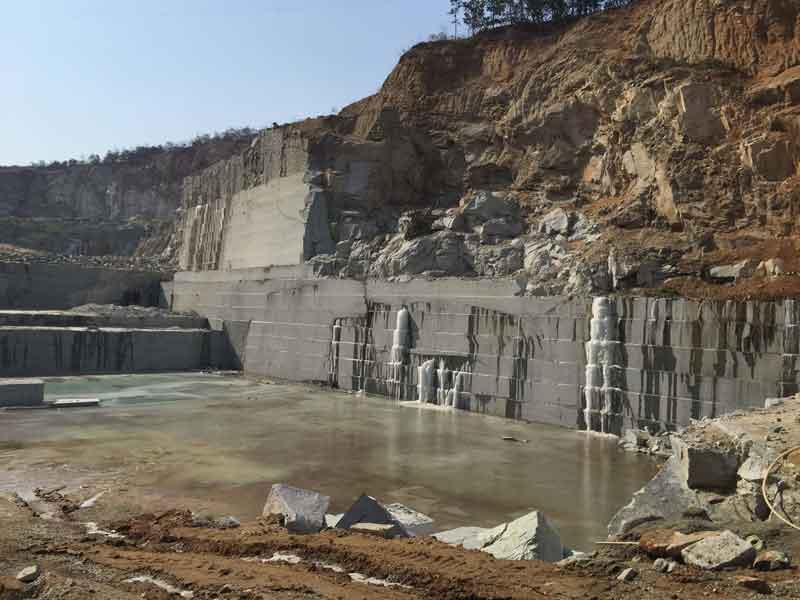Diving right into of Granite Quarries in South Africa
Diving right into of Granite Quarries in South Africa
Blog Article
Uncovering the Rich History and Sustainable Practices of Granite Quarrying
As we stand on the precipice of discovering the detailed tapestry of granite quarrying, a journey through time discloses not just the physical act of extracting stone yet also the social and historical relevance woven right into the extremely fabric of this practice. From the old beginnings that laid the foundation for contemporary quarrying techniques to the sustainable methods that are forming the future of this sector, each chisel mark on granite surface areas narrates waiting to be uncovered (granite quarries in south africa). The heritage of granite quarrying stretches far beyond simple removal; it is a testament to human ingenuity, strength, and the long-lasting attraction of this majestic stone
Old Origins of Granite Quarrying
Dating back to ancient people, the method of quarrying granite has actually been an important component of human history and building innovation. The earliest evidence of granite quarrying go back to old Egypt, where large pyramids and detailed sculptures were crafted from this resilient stone. The Egyptians made use of primitive tools to remove granite blocks from quarries, showcasing the value of this product in their monumental buildings.
Progressing in background, the Greeks additionally made considerable payments to the quarrying of granite. The Greeks made use of granite in various architectural marvels, such as temples and statues, showing their ability in shaping and sculpting this durable stone. The Romans even more refined the strategies of quarrying granite, using innovative devices like blades and hammers to essence and form granite for their iconic frameworks.
With the centuries, the method of quarrying granite has progressed, with modern-day innovations enhancing effectiveness while maintaining the timeless appeal of this all-natural rock - granite quarries in south africa. From ancient people to modern contractors, the heritage of granite quarrying remains to form our world
Development of Quarrying Strategies
The advancement of quarrying strategies has been marked by a continuous progression in the direction of greater performance and precision in extracting granite. From the basic techniques used by our forefathers to the innovative innovations used in contemporary quarrying operations, the sector has undergone considerable developments. Early quarrying techniques involved hands-on labor with basic tools such as chisels, hammers, and wedges to draw out granite blocks from the earth. As human beings progressed, methods like fire-setting and primitive nitroglycerins were introduced to promote the removal process.
In even more recent times, the development of machinery transformed the quarrying market, enabling quicker removal rates and increased productivity. Technologies such as ruby cord saws, high-pressure water jets, and pneumatic drills have actually come to be standard in modern quarries, allowing for precise cutting and reduced waste. Advancements in computer-controlled tools and 3D modeling have maximized quarrying procedures, leading to marginal environmental effect and boosted sustainability methods. As the demand for granite continues to increase, the advancement of read here quarrying methods remains integral to meeting industry requires efficiently and sustainably.
Social Relevance of Granite
Granite holds a profound social importance throughout various civilizations because of its long-lasting visibility in building their website masterpieces and admired monoliths. From the impressive pyramids of Egypt to the intricate carvings of the Angkor Wat holy place in Cambodia, granite has actually been a material of selection for revealing magnificence and long life in cultural heritage. In old Rome, granite columns decorated holy places and public structures, representing stamina and durability. The social relevance of granite extends past its physical features; it personifies strength, stability, and timelessness, making it a sign of enduring traditions and practices.

Lasting Practices in Quarrying
In the middle of the abundant background of granite quarrying and its cultural relevance exists an expanding focus on sustainable techniques within the market. As environmental understanding and worries regarding source deficiency have enhanced globally, the quarrying sector has actually significantly welcomed lasting techniques to lessen its influence on the setting and bordering neighborhoods.

Moreover, reclamation and rehab of quarry sites post-extraction are integral to lasting methods. By recovering quarried locations to a natural or helpful state, such as producing wild animals habitats or leisure areas, quarriers can offset the environmental impact of their operations and add favorably to the neighborhood community.
Heritage of Granite Quarrying
With a historical background steeped in craftsmanship and commercial development, what enduring influence has granite quarrying left news on the landscape of modern-day society? The tradition of granite quarrying transcends mere extraction methods; it has actually shaped building wonders, city landscapes, and cultural heritage worldwide. The long lasting nature of granite has made it a preferred choice for monuments, structures, and facilities, standing as a testimony to the skill and artistry of quarry workers across generations.
Moreover, the economic impact of granite quarrying can not be forgotten. The sector remains to give job opportunity and drive regional economies in areas where granite extraction prevails. It has actually likewise stimulated technological innovations in quarrying techniques and tools, resulting in more effective and lasting techniques.
In terms of sustainability, the heritage of granite quarrying includes initiatives to minimize environmental impacts through reclamation tasks and accountable resource monitoring. By balancing financial passions with environmental stewardship, the industry makes every effort to make sure that future generations can proceed to benefit from this long-lasting natural deposit.
Verdict

Report this page